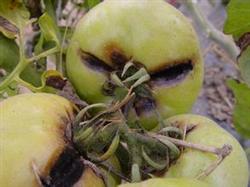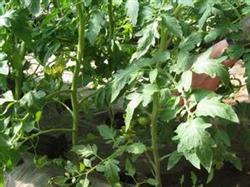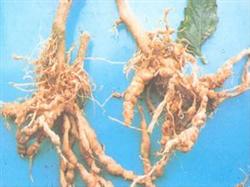The reason why tomatoes can't sit still in the later stage

Put trace elements are usually this kind of tomato early fruit setting rate is very good. Usually the fruit in the early stage is too large, do not give water and fertilizer too early, do not expand the fruit too early, leave fruit as little as possible, use more trace elements and large amounts of phosphorus in the early and middle stages, and use no more than 40 jin per mu of diamine per mu in the early stage and seedling stage. Shanghai Yongtong potassium dihydrogen phosphate can be sprayed two or three times in flowering and young fruit stage. When applying base fertilizer, use a good proportion of trace elements contained in Quimitta, boron, calcium, magnesium, sulfur and potassium, and then increase the amount of water and fertilizer in the second ear, in order to make flower bud differentiation good phosphorus and calcium, strengthen the management of water and fertilizer, pay attention to the quality of fertilizer, use a little less with high phosphorus content at flowering stage, you can use less than 10 jin of fertilizer per mu, and balance fertilizer can be used once when the second ear fruit grows to the size of a small egg. 20] ten jin per mu. When it comes to the third layer of fruit, 15 jin per mu can not be re-used every 7 to 10 days. It is best to use it with bacteria so that your empty ear can be solved. All in all, it is better to use fertilizer, water and management.
- Prev

Three wonderful ways to prolong the picking period of Tomato
After the first generation tomato is harvested, the following three methods can be adopted to make the tomato blossom and bear fruit again and improve the economic benefit. 1. After the first generation tomato is ripe and harvested, the withered branches and yellow leaves are cut off, the new branches with exuberant regeneration ability are retained, and a fertilizer application ditch 20 cm long and 15 cm deep is dug on one side of the trunk.
- Next

Chemical Control of Tomato Root-knot nematode
In recent years, the incidence of tomato root-knot nematode is on the rise, especially in dry sandy soil, which has caused great losses. Root-knot nematodes have a wide range of hosts, which not only damage tomato, but also seriously damage cucumbers and sweet peppers. Root-knot nematodes are often left in the soil with eggs or 2 th instar larvae with tumors, root knot and diseased remains.
Related
- Where is it suitable to grow horseradish in China? it is expected to see the middle altitude horseradish in Alishan.
- How to prevent tomato virus disease reasonably? (Control methods included)
- Many people like to plant towel gourd on the balcony. What are the main points of this method and management?
- What crops can chili peppers be mixed with?
- Fertilization techniques and matters needing attention in Tomato
- What are the grafting techniques for peach seedlings in spring?
- Harm and control methods of root swelling disease of Chinese cabbage
- What are the pests of sweet potatoes? How to prevent and cure it?
- Symptoms, causes and Control methods of navel Rot in Tomato
- The cause of "Cucumber rotten bibcock" in Farmers' planting Cucumber and its Control Plan

